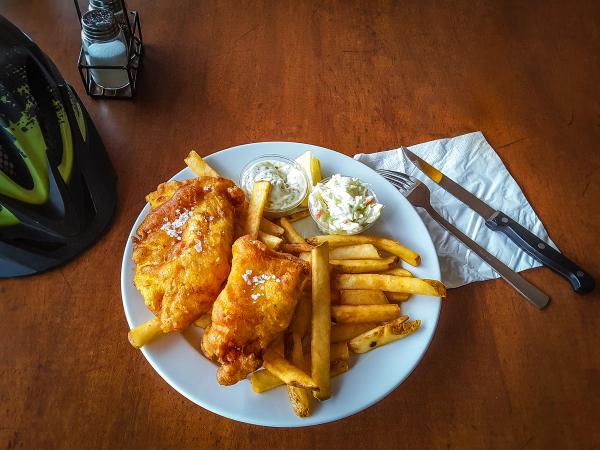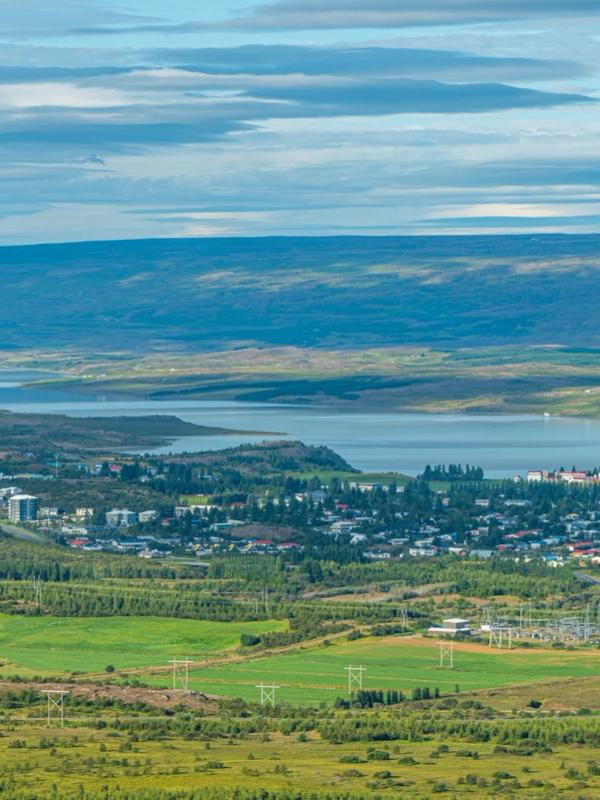
Discovering Egilsstaðir: The capital of East Iceland
East Iceland is a region that many travelers skip in their trip, missing a place where nature is displayed in awesome ways and where Icelandic culture can truly be seen, far from the tourists’ traps. And its capital, Egilsstaðir, perfectly embodies the spirit of the region.
Located in the heart of the region, along the banks of a beautiful lake, is the gateway to the fjords, forests, and waterfalls that define the area. It’s also well connected by road, sitting just off the Ring Road, making it a fantastic stop on a trip through the country.
Key Takeaways
- Egilsstaðir is the capital of East Iceland, called Austurland in Icelandic.
- In spite of its little population, this city is an important cultural hub.
- East Iceland is mainly known for being the home of the Eastfjords.
Why is it worth it to visit Egilsstaðir?
Egilsstaðir is the largest settlement in East Iceland, known locally as Austurland. This region covers a vast area with little population. In fact, the city has barely 2,500 inhabitants. The general feeling the travelers get when coming to this region is a mix of freedom and isolation. A place that can be explored without crossing paths with other tourists.
The town itself is compact, with essential services like shops, a hospital, and an airport. For these reasons, it’s the perfect place to use as a base to get to know East Iceland. It’s not only the most complete city in the area, but also settled in a central location within the region. In fact, the Ring Road (Route 1), the most important road in the country, crosses the town. Geographically, Egilsstaðir is in the Fljótsdalshérað valley, surrounded by fertile land and mountains that create a beautiful backdrop of green fields and rugged peaks.
Historically, Egilsstaðir is young, founded in 1947 as a service center for the surrounding farms and fisheries. Before that, the area held ties to early Norse settlers, with sites like the ruins of Skriðuklaustur monastery nearby, dating back to the 15th century. This former religious site now houses a museum showcasing medieval artifacts and the life of Icelandic author Gunnar Gunnarsson, who lived there in the 20th century. East Iceland is the part of the island where the first Viking settlers arrived, and there are remains of ancient settlements in the area.
One of the town's most attractive elements is its folklore. The city was built on the shore of Lake Lagarfljót, a quite famous lake in Iceland. The main reason, apart from its beauty, is the legend of the Lagarfljótsormur, a mythical serpent-like creature said to dwell in its depths. A legend very similar to Scotland's Loch Ness Monster. There are records of alleged sightings that date back to the 14th century. Birdwatchers appreciate the area too, with species like the red-throated diver nesting along the shores.
Culturally, Egilsstaðir hosts events such as a jazz festival and electronic music concerts, showcasing a vibrant arts scene in this remote spot. The town's heritage museum features turf houses, which are nice examples of traditional Icelandic dwellings. If you’re looking for beautiful natural environments, just a few minutes from the town’s center, we can find Hallormsstaður, also called Hallormsstaðaskógur, Iceland's largest forest, planted over a century ago.
Overall, Egilsstaðir is a fantastic destination for those seeking a balance of tranquility, history, and easy access to East Iceland's wilder features.
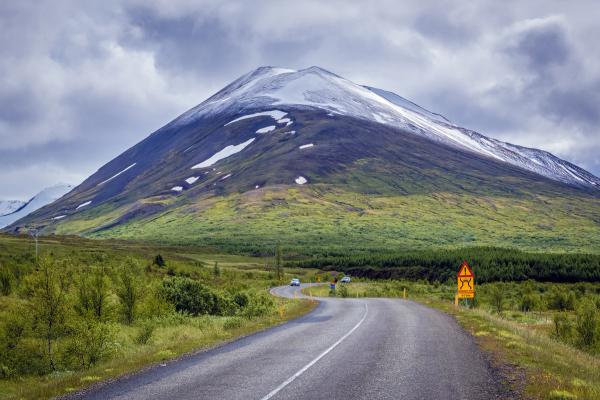
Where to Eat in Egilsstaðir
Although Egilsstaðir is not a large city, there are still a good number of options for eating out. The restaurants and cafés in town serve dishes made with local ingredients, with fresh fish and lamb being the highlights. Options range from casual cafés to more formal dining spots.
- Restaurant Gistihúsið has an extensive menu, from which you can choose from hamburgers to curries. The stars are the lamb, fresh fish, and seafood recipes, all using regional produce. They have a great selection of desserts, many of them based on skyr, a type of yogurt typical of Iceland.
- Glóð Restaurant has varied options, from pizza and pasta to grilled meat and seafood soups, all served in a warm, inviting space.
- Salt Café & Bistro provides light meals and coffee, known for its sandwiches and pastries made with local flavors. It’s a more economical option.
- Fish & chips is quite a popular food in Iceland. If that’s your go-to meal, try Kjot&fiskur Fresh Fish, which specializes in seafood straight from the fjords, with simple preparations like fried cod and homemade fries.
- Askur Pizzeria delivers wood-fired pizzas with Icelandic twists, such as toppings featuring local cheeses and herbs, or minced reindeer.
Where to Stay in Egilsstaðir and Nearby
As it happens with restaurants, there are a few options in Egilsstaðir. They suit different preferences and budgets, from hotels with full services to simpler guesthouses and campsites.
For a comfortable hotel stay, try Hérað Hotel, which offers modern rooms with a simple design, a restaurant, and views of the surrounding hills, centrally located in town.
Lyngás Guesthouse, also in the town’s center, provides affordable, clean rooms with shared facilities, such as a kitchen, ideal for travelers on a budget.
Hotel Eyvindará, a bit outside town, has rooms but also cozy cabins with a rustic style. Here you can be closer to nature, with access to hiking paths. They also have hot tubs.
For camping, Egilsstaðir Campground sits close to the lake, equipped with pitches for tents and RVs, plus basic amenities like toilets, showers, and kitchens.
Nearby, in Hallormsstaður, the largest forest in Iceland, there’s a camping ground by the shore of Lake Lagarfljót. This family-friendly site has toilets, showers, electricity, a BBQ area, outdoor tables, and a playground for children.
These are just some of the options, but there are a few more.
Where's Egilsstaðir and How to Get There
As we have already mentioned, Egilsstaðir lies in East Iceland, about 640 kilometers (roughly 400 miles) east of Reykjavík along the Ring Road, or Route 1. If you’re traveling from the capital, it’s a long journey, but you can plan a route with a couple of stops and incorporate it into a road trip through the country.
The best way to reach Egilsstaðir is by car, which allows for flexibility to stop at sights along the way. As the Ring Road crosses through town, the route is quite easy to follow. You just need to follow Route 1 until you reach the city.
From Reykjavík, you have two options. You can choose to go there through the north or the south of the island. Both are similar in distance. The north route is 640 kilometers (400 miles), while the south one is 690 kilometers (428 miles). You can decide based on the things you want to see along the way. Either way, the total trip is between 8 and 9 hours without stopping.
Domestic flights from Reykjavík to Egilsstaðir Airport take about an hour. If you want to use public transport, buses run daily but take longer, around 10 hours from the capital. Bear in mind that the service can be canceled in winter or if the weather is harsh. Once there, however, you’ll need a car to move around, and the rental options in East Iceland are much more limited.
What to See and Do Near Egilsstaðir
East Iceland stands out for its remote feel, with deep fjords cutting into the coastline and mountains rising sharply from the sea. This region, less crowded than the south or west, has colorful fishing villages, puffin colonies, and reindeer herds roaming the highlands. There’s a lot to see in this region, and Egilsstaðir serves as an ideal base to explore it all.
Lagarfljót
Stretching 25 kilometers (15 miles) long, Lagarfljót is a narrow lake just outside Egilsstaðir. Its calm waters reflect the surrounding hills, and the legend of the Lagarfljótsormur, the monster that allegedly lives there, adds a layer of folklore. While it’s quite unlikely to see the creature, it’s a gorgeous place. You can take a boat tour to explore the shores or cycle one of the many paths around the lake. Birdwatching is popular here, with species like ducks and swans gathering on the water.

Vök Baths
Luckily, the probably best spa in East Iceland is just 5 kilometers (3 miles) from Egilsstaðir. The Vök Baths have infinity pools built directly on the surface of Lake Urriðavatn. The pools are naturally heated by nearby hot springs to 38-40°C (100 to 104°F). The facilities include saunas, cold plunges, and a tea bar with herbal infusions, making it a great spot after a day of travel or hiking. Open year-round, the baths provide a contrast to the cool air, especially under starry skies in evening hours. Entry includes access to changing rooms and towels.
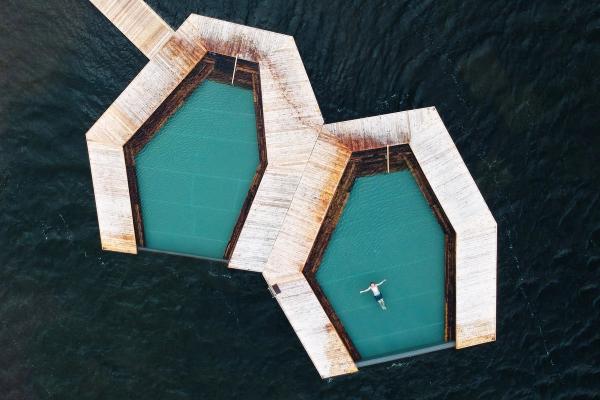
Seyðisfjörður
Nestled at the end of a fjord, this village lies 27 kilometers (17 miles) from Egilsstaðir via a winding mountain pass that offers amazing panoramic views. It features colorful wooden houses, and although it’s a small town, it has several art galleries with local crafts and contemporary works. The Blue Church hosts summer concerts and events, and there’s a short trail that leads to Gufufoss, a beautiful waterfall.
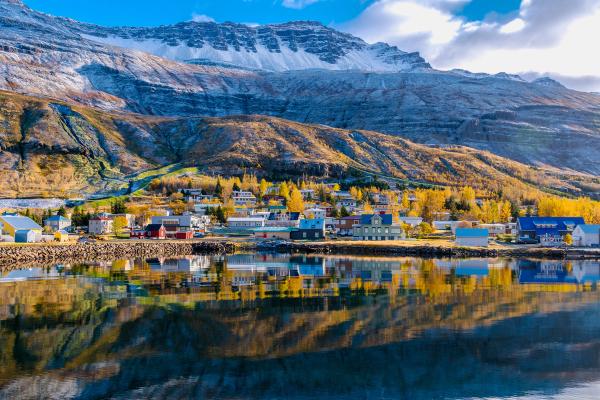
The Eastfjords
Sometimes, people refer to the whole region of Austurland as the Eastfjords, as they are its most distinctive feature. The fjords stretch along the coast, where you can find fishing towns that showcase the strong connection between Iceland and the sea. In summer, many bird species come to the cliffs in the fjords to nest, with puffins being the main attraction in this sense. Seals can also be spotted swimming between the rocks by the shore.
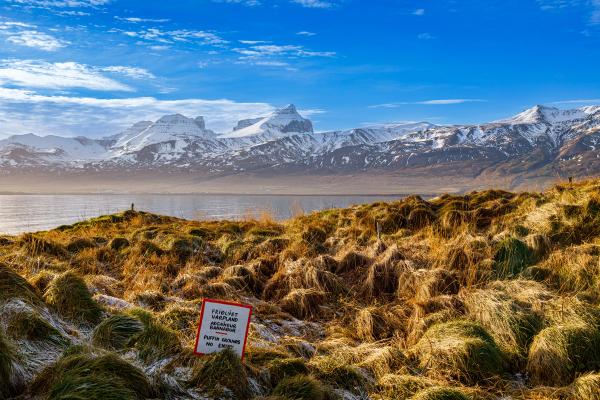
Gufufoss
This waterfall cascades 27 meters (89 feet) near Seyðisfjörður, accessible by a short walk from the road that takes just a few minutes. On days with good weather, the sun creates a rainbow effect on the mist. It's a quick stop to make on your road trip, ideal for stretching legs or capturing photos. In winter, the falls may partially freeze, forming ice sculptures that improve the look of the waterfall even more.
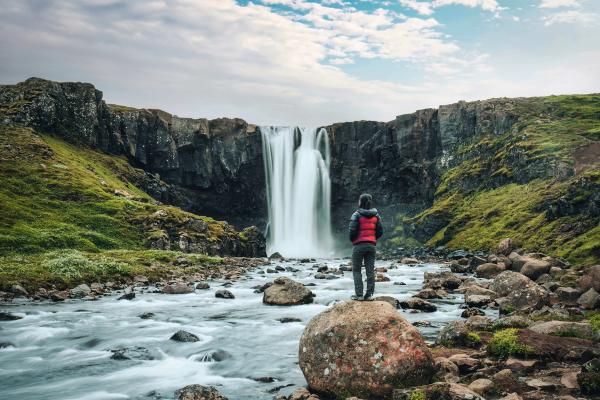
Klifbrekkufossar
Waterfalls are one of the most sought-after natural monuments in Iceland. And, fortunately, there are several near Egilsstaðir. Klifbrekkufossar is a series of seven waterfalls, one after the other, with a total drop of 90 meters (295 feet), located in Mjóifjörður along a quiet fjord road. There’s a trail that follows the falls, offering views of the fjord below and passing through grassy meadows. The hike takes about an hour round-trip. Pack water, as this remote spot has no facilities.

Hengifoss and Litlanesfoss
A short drive from Egilsstaðir leads to the trailhead for Hengifoss, Iceland's third-tallest waterfall. It stands at 128 meters (420 feet) and is framed by basalt columns, creating a jaw-dropping scene. The 2.5-kilometer hike from the parking area takes about 45 minutes each way, winding through a lush valley. The hike to Hengifoss takes you past Litlanesfoss, another stunning waterfall framed by hexagonal basalt formations. The trek is moderately challenging but rewards you with breathtaking views.

The Weather in Egilsstaðir
In Iceland, the weather is unpredictable and is constantly changing. Even in summer, you have to be prepared for a bit of everything. East Iceland is not as cold as the north or the center of the country, but it’s certainly not hot either. The proximity of Egilsstaðir to the sea softens the temperatures a bit, but makes it more exposed to rain and wind. Here’s what you can expect in each season.
Summer in Egilsstaðir, from June to August, brings mild days with temperatures between 10°C and 15°C (50°F to 59°F). The days are really long, with almost 24 hours of natural light by the end of June. Expect occasional rain, mixed with sunny spells, and light winds.
Autumn (September and October) sees the temperatures drop to 5°C to 10°C (41°F to 50°F). The meadows and forests, like Hallormsstaður, get beautiful changing colors. Rainfall increases, and the first days of snow can arrive by mid-October. It’s the season with fewer tourists.
Winters (November to March) are long and cold in Iceland, and the east of the country is no exception. The temperature is usually below 0°C (32°F), with snow covering the ground. The days are very short, with almost no natural light by the end of December and beginning of January. Driving can be tricky, and many roads, especially secondary ones, close if the weather is too harsh. On the other hand, if the night is clear, there are high chances to see the Northern Lights.
Spring, from April to May, warms gradually from 0°C to 10°C (32°F to 50°F). The snow starts to melt, revealing green fields full of flowers. However, rain is quite common, so the trails can be muddy.

What to Pack to Visit Egilsstaðir
- Waterproof jacket and pants for sudden showers.
- Layered clothing like fleece and thermal base layers to adapt to the ever-changing temperatures.
- Sturdy hiking boots with good grip.
- Warm hat, gloves, and a scarf, even in summer. The nights can be quite cold.
- Sunscreen and sunglasses for bright days. In winter, the reflection of the sun off snow can be quite powerful.
- Reusable water bottle, as tap water is clean.
- If you’re a wildlife fan, binoculars for spotting birds or reindeer.
- Portable charger for devices during long days out.
- Daypack for carrying essentials on hikes.

Travel Tips
- Rent a 4x4 vehicle if you’re planning to go to more remote areas. Many secondary roads are gravel, with potholes, so pick a vehicle with high clearance.
- Check the road conditions before driving, especially in winter.
- Book accommodations early, especially in summer, as many places can get busy.
- Carry cash for small businesses, though cards are widely accepted.
- Respect your surroundings. Don’t leave marked trails and pack out all your trash. Nature in Iceland is fragile, and we all must play our part to keep it pristine.
- Download offline maps, as cell signal can be weak in remote areas.
- Try the local food, especially fish and lamb dishes.
- Monitor the weather regularly for quick changes.
- Visit the information center in town for free maps and advice.

Conclusion
If you’re planning a trip to Iceland, perhaps you didn’t think about Egilsstaðir as one of your priorities. However, East Iceland is one of the most remote and least visited regions in Iceland, but it is full of wonders that are worth every minute of your time. Egilsstaðir may not be a big city, but it’s full of charm, a place where the Icelandic way of life can be felt to the maximum.

